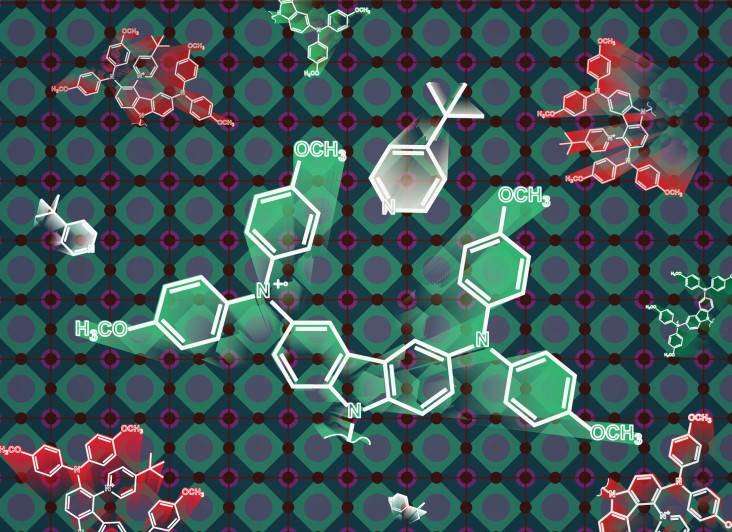Scientists report technique to prolong lifespan of perovskite solar cells

A group of chemists at Kaunas University of Technology (KTU), Lithuania, together with the physicists from Vilnius University and the Swiss Federal Institute of Technology, Lausanne (EPFL), have uncovered one of the possible reasons behind the short lifespan of perovskite solar cells and have offered solutions. According to the scientists, hole transporting materials used in perovskite solar cells are reacting with one of the most popular additives, tert-butylpyridine, which has a negative impact on overall device performance.
Although perovskite solar cells are attracting attention because of their increasing power conversion efficiency, low-cost materials and relatively simple fabrication process, these next-generation solar cells are still in the early stages of commercialisation in comparison to mature solar technologies. One of the main concerns is the stability and relatively short lifespan of the perovskite elements.
Professor Vytautas Getautis from the KTU Faculty of Chemical Technology says that so far, no attention has been paid to the possible interaction between the elements of the solar cell. For the first time, KTU chemists have uncovered the chemical reaction between the components of the hole transporting layer composition – the semiconductor and the additive used to improve the performance of the solar cell.
"We have raised a hypothesis that tert-butylpyridine, which is a routinely used additive for improving performance, is reacting with semiconductors, i.e. hole transporting materials in the solar cells. Due to the reaction, the efficiency of the hole transporting material declines, as the new pyridinated products are formed, and this has negative influence on the performance of the cell," explains Professor Getautis.
First, the KTU chemists synthesized and characterized the pyridinated products, which hypothetically could diminish the efficiency of hole transporting materials. Then, the EPFL physicists under Prof Mohammad Khaja Nazeeruddin confirmed the presence of the products in the aged perovskite solar cells by means of mass spectrometry, and proved their negative influence on the overall device performance.
"The concentration of these products is very low after several months of ageing of the cell. However, the detection of the harmful substances after exploitation opens new avenues in the production of the long-term stable perovskite solar cells," says Professor Getautis.
KTU scientists are offering several solutions to avoid this problem. Their first suggestion is to use less-nucleophilic or sterically hindered pyridine derivatives. Another option would be changing the molecular structure of the HTM so as it would not react with tert-butylpyridine.
The findings were published in an article titled "Pyridination of hole transporting material in perovskite solar cells questions the long term stability."
More information: Artiom Magomedov et al. Pyridination of hole transporting material in perovskite solar cells questions the long-term stability, Journal of Materials Chemistry C (2018). DOI: 10.1039/C8TC02242A
Provided by Kaunas University of Technology




















